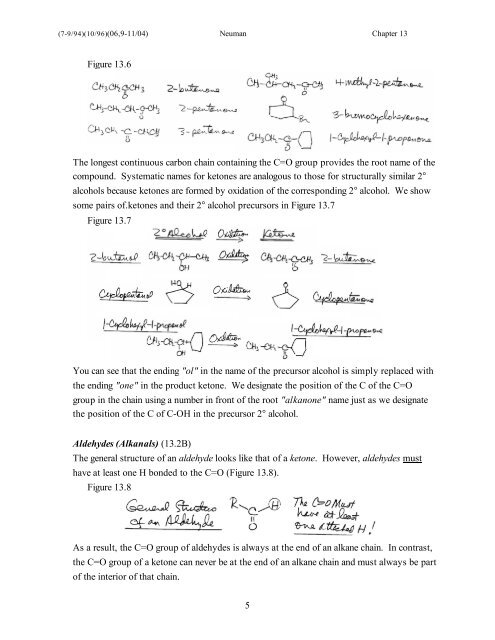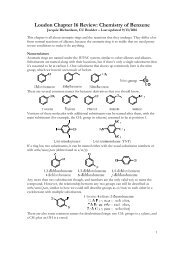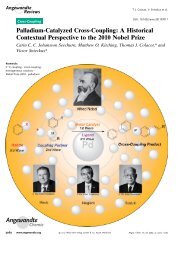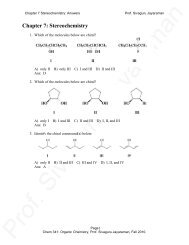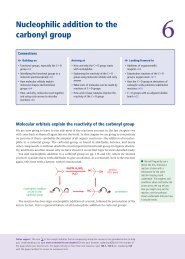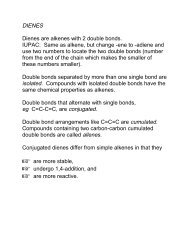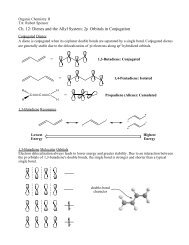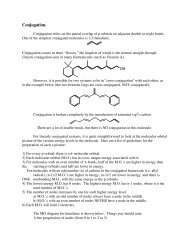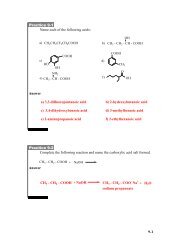chapter 13
chapter 13
chapter 13
Create successful ePaper yourself
Turn your PDF publications into a flip-book with our unique Google optimized e-Paper software.
(7-9/94)(10/96)(06,9-11/04) Neuman Chapter <strong>13</strong><br />
Figure <strong>13</strong>.6<br />
The longest continuous carbon chain containing the C=O group provides the root name of the<br />
compound. Systematic names for ketones are analogous to those for structurally similar 2°<br />
alcohols because ketones are formed by oxidation of the corresponding 2° alcohol. We show<br />
some pairs of.ketones and their 2° alcohol precursors in Figure <strong>13</strong>.7<br />
Figure <strong>13</strong>.7<br />
You can see that the ending "ol" in the name of the precursor alcohol is simply replaced with<br />
the ending "one" in the product ketone. We designate the position of the C of the C=O<br />
group in the chain using a number in front of the root "alkanone" name just as we designate<br />
the position of the C of C-OH in the precursor 2° alcohol.<br />
Aldehydes (Alkanals) (<strong>13</strong>.2B)<br />
The general structure of an aldehyde looks like that of a ketone. However, aldehydes must<br />
have at least one H bonded to the C=O (Figure <strong>13</strong>.8).<br />
Figure <strong>13</strong>.8<br />
As a result, the C=O group of aldehydes is always at the end of an alkane chain. In contrast,<br />
the C=O group of a ketone can never be at the end of an alkane chain and must always be part<br />
of the interior of that chain.<br />
5


